Hello again,
Last Thursday, I was very honored to receive an honorary doctorate from Ave Maria University in Florida.
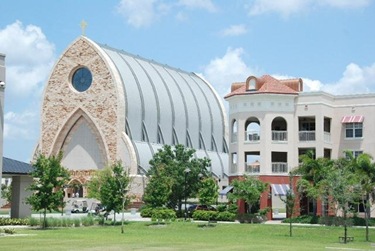
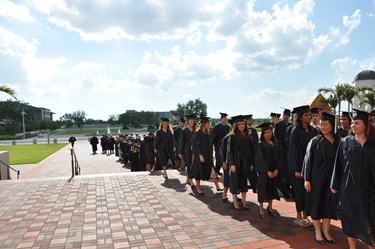
Ave Maria is a relatively new Catholic university that was founded by Tom Monaghan, a man who had been raised in a Catholic orphanage and became a multi-millionaire as the founder of Domino’s Pizza.
At one point in his life after reading C.S. Lewis’ “Mere Christianity” he had a deep conversion and has decided to use all of his wealth on behalf of the Church and society.
I first became aware of his work when he rebuilt the cathedral in Managua, Nicaragua, after the earthquake there in 1972. He also sent his plane to the Virgin Islands with generators when I was trying to open the schools after Hurricane Hugo.
We opened the Catholic schools immediately in tents but I needed generators to be able to flush the toilets. I told the pastors: If we can flush the toilets we can open the schools.
The public schools were closed for about two years, but we opened the Catholic schools immediately. His jet plane brought the generators down and, when he landed, all the people on St. Croix were so excited. The planes said Domino’s Pizza on them and we were living on coconut milk and cold baked beans at the time. They said “The bishop sent out for pizza!”
This was my first visit to the campus there in Florida, near Naples. The president is Dr. Nick Healy, who is the uncle of a Boston priest serving on the faculty of St. John’s, Father Bob Oliver. The university has about 800 students at that campus, another 500 in Nicaragua, plus the law school, which they have moved down to Naples.
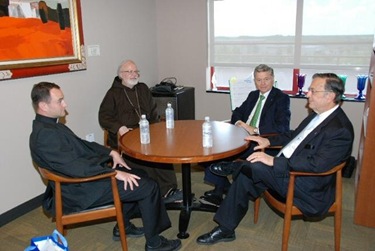
Our vocations director, Father Dan Hennessey, and I meeting with Tom Monaghan and Nick Healy
They have something like 1,000 acres of land for expansion. The plan is to make this a very large Catholic university. Tom Monaghan said his vision is to have a Notre Dame-sized university in the south, with very special emphasis on the religious formation of the student body and promoting vocations to priesthood, Christian marriage, consecrated life, and lay ministries.
It’s amazing what has been achieved there.
They have established the university in a part of the state that is a very rural area where they grow tomatoes and oranges, and where life can be hard for people. But they felt called to locate it in that area rather than closer to Naples in order to be able to serve the needy.
They have a beautiful chapel, which they just dedicated recently.
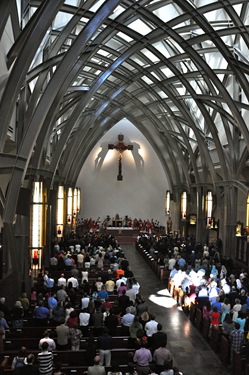
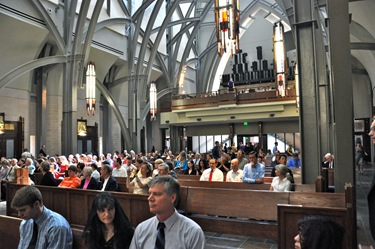
They are also putting a large sculpture of the Annunciation over the doors of their oratory.
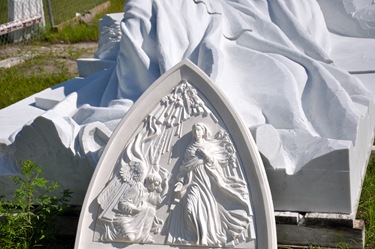
A small, scale model of the sculpture
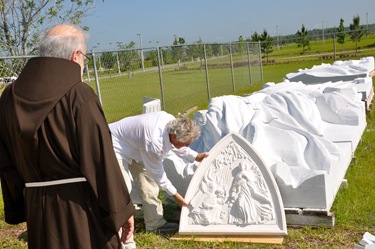
We met the artist, Marton Varo, who is working to create it and he gave us a piece of the marble chipped from the sculpture as a remembrance of our visit.
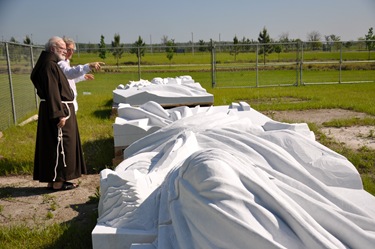
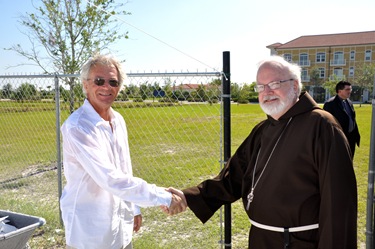
We met a number of the students from Boston who are there, and some of the members of the faculty who had gone to Boston College.
I was awarded a Doctorate of Humane Letters, which they presented to me at the end of the Baccalaureate Mass I celebrated the evening before the commencement.
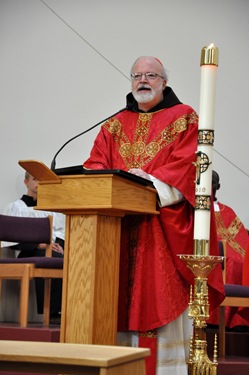
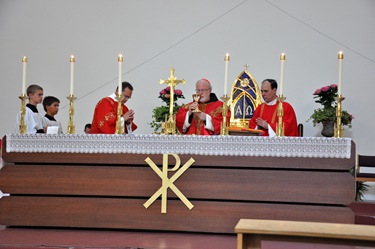
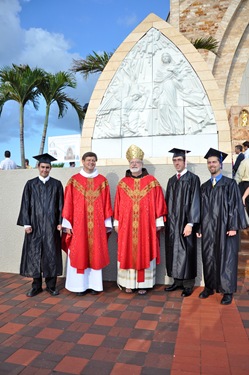
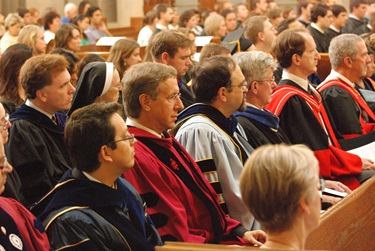
At the commencement itself, they awarded two other honorary doctorates — one to novelist Mary Higgins Clark and the other to Catholic entrepreneur and philanthropist Frank Hanna.
Mary is a very outstanding Catholic lay woman. She recently was named a Dame of the Order of St. Gregory the Great, which is the highest honor a lay person can receive from the Holy Father.
Ave Maria, like Steubenville, Magdalen College and Thomas More College, are colleges that have come about to give a very serious Catholic formation to their students through their strong Catholic identity.
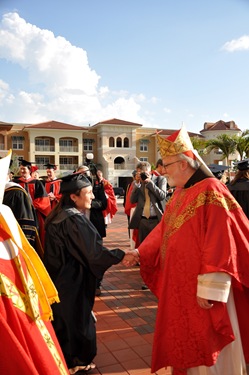
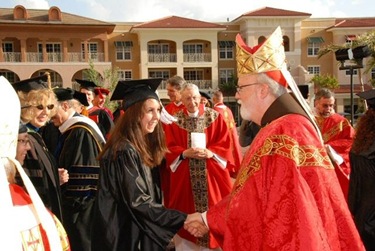
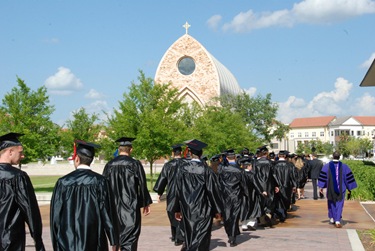
A very large percentage of the student body at Ave Maria is majoring in theology. They have very rigorous standards for intellectual formation.
The law school is already rated as one of the best in the country with one of the highest rates of people passing the bar exam on the first try.
Tom Monaghan is not just starting a Catholic summer camp, but the idea is to make it a profoundly serious intellectual community that is very demanding of the students.
They had quite a cross-section of graduates from all over the country. It was very impressive to see how many places were represented at the graduation.
– – –
On Sunday, I was back in Boston to celebrate a Mother’s Day Mass at St. Peter Parish in Dorchester with the Cape Verdean community. I concelebrated with St. Peter’s pastor, Father Jack Ahern.
Afterwards, we visited the parish center. The church was full. They had a wonderful musical program in honor of the mothers.
The Capuchins have had a very longstanding relationship with the Cape Verdean community since the time of Padre Pio and the Hermanas Franciscanas de la Imaculada Concepcion (Franciscan Sisters of the Immaculate Conception), an order founded by Padre Pio to work among the Cape Verdeans.
The Mass ended with a crowning with the Holy Ghost crown because the Sundays before Pentecost for the Portuguese-speaking Catholics are the “Domingas.”
At the end of Mass a family is consecrated to the Holy Spirit. They take the Holy Ghost crown to their home for a week, and then the following week another family will have it — all part of the Novena before Pentecost.
On the way to the Mass, I stopped off at the Mothers Walk for Peace that takes place each year in Dorchester. Many mothers who were in the march also participated in the Mass at St. Peter’s.
– – –
After that I flew to Portugal to accompany the Holy Father on his visit there.
 While in Portugal, I had a confirmation ceremony for a young man I had baptized many years ago.
While in Portugal, I had a confirmation ceremony for a young man I had baptized many years ago.
I recently published a book there, "Anel e Sandálias" so there were a number of interviews about the book.
We had Mass with the Holy Father in Lisbon, at the Terreiro do Paço, right near the bank of the river Tajo. It was a glorious celebration. The crowd filled the plaza. Many of the streets and neighboring plazas had screens so the overflow crowd could be a part of it. They think there were about 200,000 people there, and there were another half million at the shrine in Fatima on Thursday.
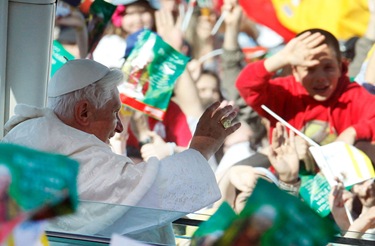
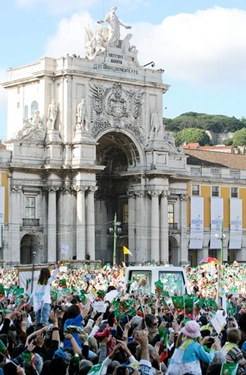
![bentoxvi_portugal_terreiro_paco_missa_consagracao[1] bentoxvi_portugal_terreiro_paco_missa_consagracao[1]](https://cardinalseansblog.org/wp-content/uploads/2010/05/bentoxvi_portugal_terreiro_paco_missa_consagracao1.jpg)
The Holy Father’s visit has been marked with great enthusiasm, particularly on the part of young people. It was very encouraging to see how many young people participated in the celebrations.
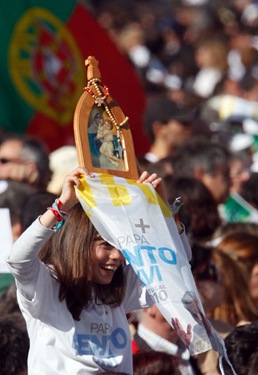
At Fatima, on Wednesday night the Holy Father presided at a vespers ceremony for priests, seminarians, and those in consecrated life. There was a Eucharistic benediction, and the Holy Father led us in the rosary at the Capelinha das Aparições, the place of the apparitions. Then we had the candlelight procession with a half million people. It was spectacular singing all the familiar Fatima songs. That culminated in a Mass celebrated by Cardinal Bertone at 10:30 or 11 o’clock at night.
![bentoxvi_portugal_fatima_bencao_velas3[1] bentoxvi_portugal_fatima_bencao_velas3[1]](https://cardinalseansblog.org/wp-content/uploads/2010/05/bentoxvi_portugal_fatima_bencao_velas31.jpg)
![bentoxvi_portugal_fatima_bencao_velas2[1] bentoxvi_portugal_fatima_bencao_velas2[1]](https://cardinalseansblog.org/wp-content/uploads/2010/05/bentoxvi_portugal_fatima_bencao_velas21.jpg)
![bentoxvi_portugal_fatima_bencao_velas1[1] bentoxvi_portugal_fatima_bencao_velas1[1]](https://cardinalseansblog.org/wp-content/uploads/2010/05/bentoxvi_portugal_fatima_bencao_velas11.jpg)
![bentoxvi_portugal_fatima_bencao_velas[1] bentoxvi_portugal_fatima_bencao_velas[1]](https://cardinalseansblog.org/wp-content/uploads/2010/05/bentoxvi_portugal_fatima_bencao_velas1.jpg)
Thursday morning, there was another rosary at 9:00 a.m. and then a procession with the statue of Our Lady to the altar on the steps of the Basilica where the Holy Father celebrated the Mass.
![bentoxvi_portugal_santuario_papamovel[1] bentoxvi_portugal_santuario_papamovel[1]](https://cardinalseansblog.org/wp-content/uploads/2010/05/bentoxvi_portugal_santuario_papamovel1.jpg)
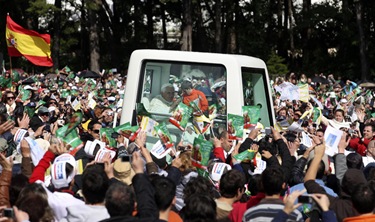
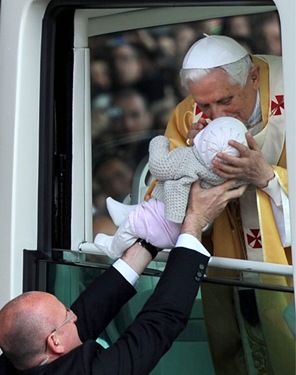
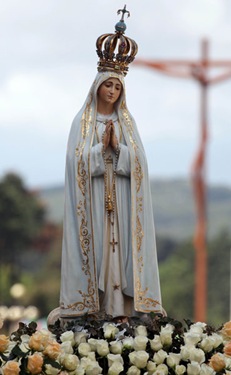
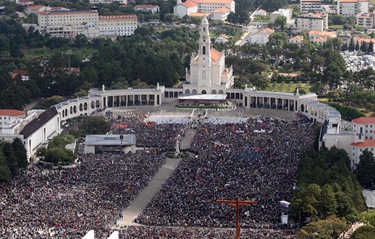
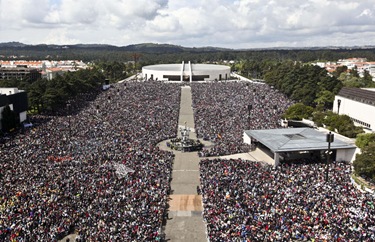
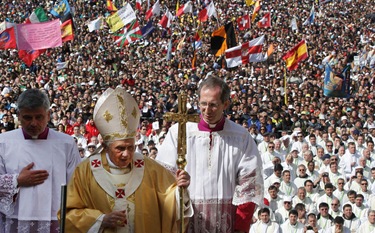
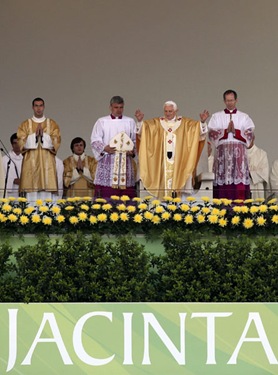
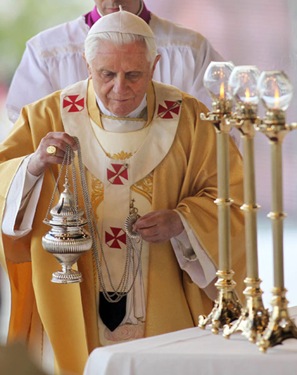
Afterwards, the Holy Father blessed the sick with the Blessed Sacrament. Then we carried the statue back to the capelinha singing the famous farewell song to the Blessed Virgin, the Senhora do Rosário. It was very, very moving to see half a million people waving their handkerchiefs as the statue is returned to the capelinha.
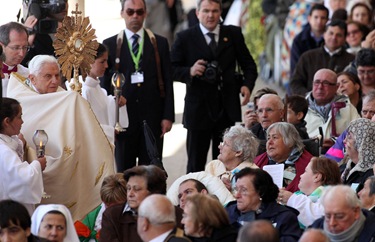
Then, I had lunch with John Allen, a writer for the National Catholic Reporter and a Vatican analyst for several national media outlets.
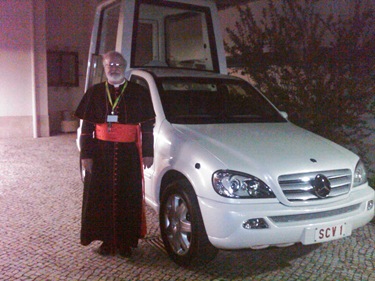
We are staying in the same place as the Holy Father during our visit
My original intention had been to meet up in Fatima with a group of about 80 people from Boston led by Father Walter Carreiro from Saint Anthony in Cambridge.
They began their pilgrimage in the Azores and were to continue on to Fatima. Unfortunately, because of flight delays caused by the volcanic ash from Iceland, they were unable to get here in time.
However, we did run into Loretta Gallagher, who founded the Serra Club in Boston who was here with a group from the Boston area.
In fact, I myself got stranded for a day in Dublin because our plane left six hours late. It did however, did give me a chance to visit St. Mary’s Pro-Cathedral in Dublin. I took Father Jonathan Gaspar, my priest secretary who accompanied me on this trip, to see the Book of Kells, the famous Gospel at Trinity College.
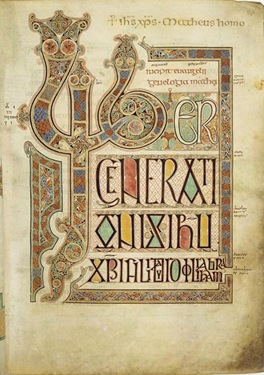
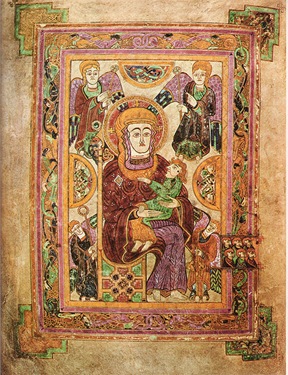
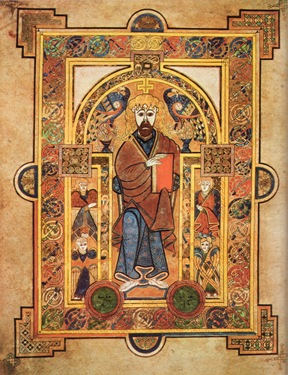
We spent a few hours in Dublin because our flight was cancelled, again, due to the volcanic ash.
I was very struck by several comments the Holy Father made during his pastoral visit to Portugal.
He underscored the importance of the saints and sanctity. I think he was trying to emphasize that even in such a secular culture we are called to be witnesses of the Gospel values and to do so with enthusiasm and joy.
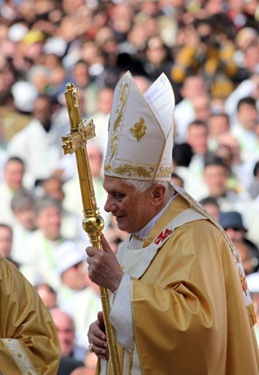
The Holy Father also had a very interesting meeting with artists and people from the world of culture where he made some very interesting statements too.
On the plane he talked about the sexual abuse crisis and was very clear that the causes for our pain are not from outside the Church but from the sin and the failings of people within the Church. So, calling to mind the message of Fatima of conversion, of penance, and of prayer is a very important one for us.
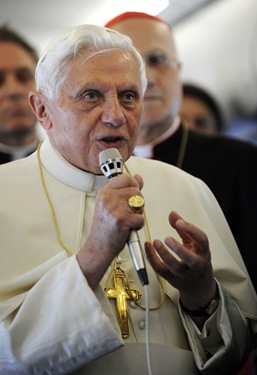
The Holy Father was very clear that he was not dismissing — as some have — the sexual abuse crisis as a media blitz, but it is squarely a problem we have to own up to and deal with. He placed the safety of children and the mission of the Church to call people to holiness and conversion at the center of his message.
Until next week,
Cardinal Seán
